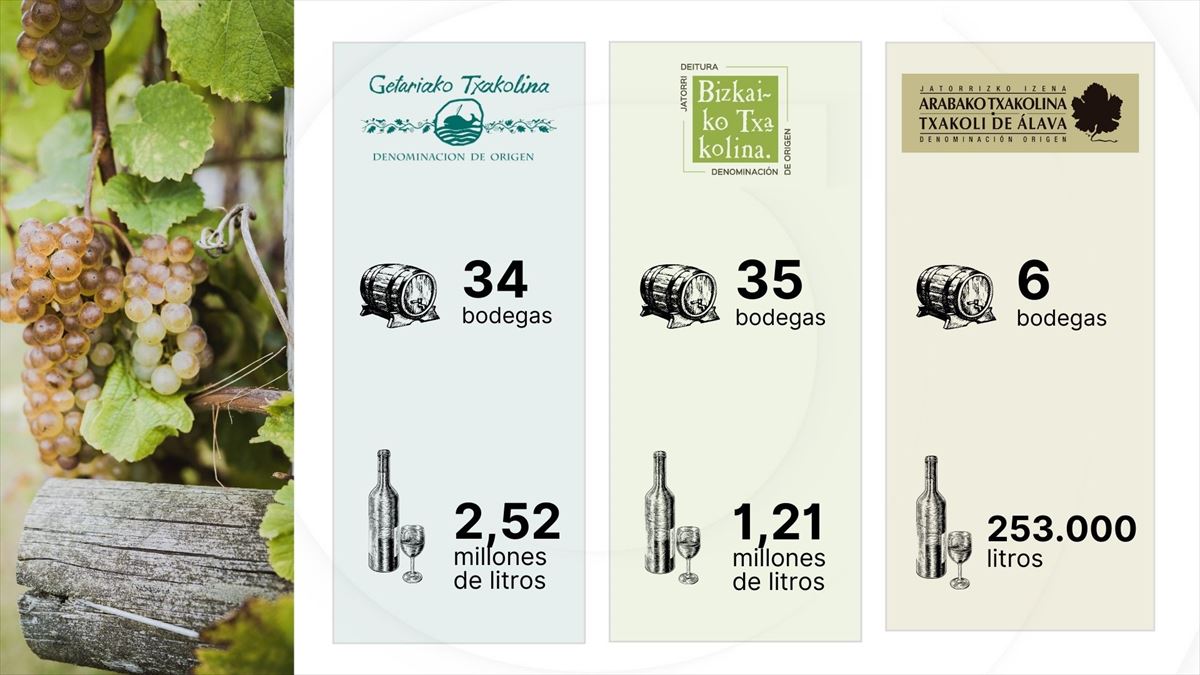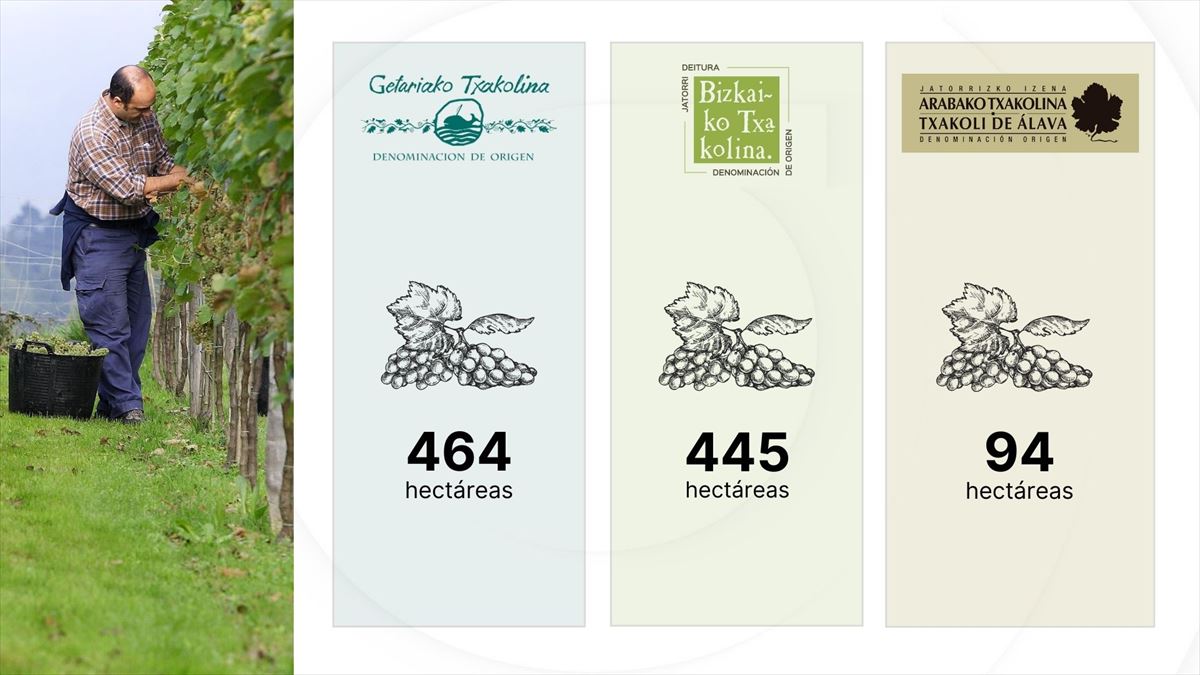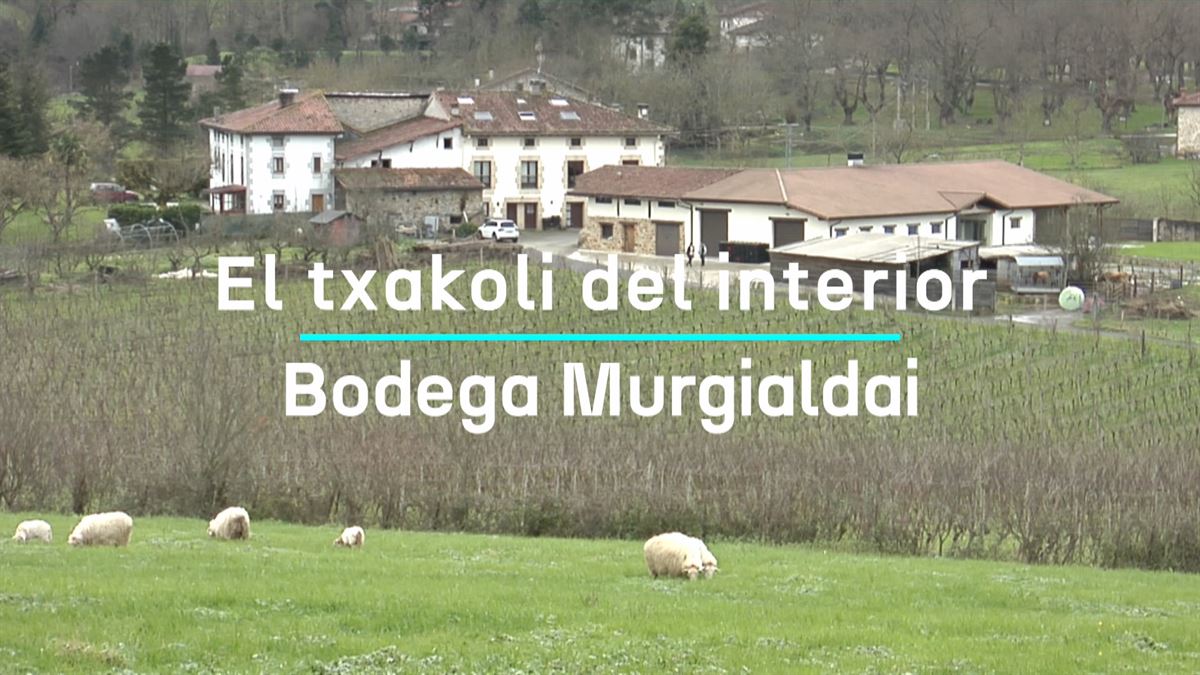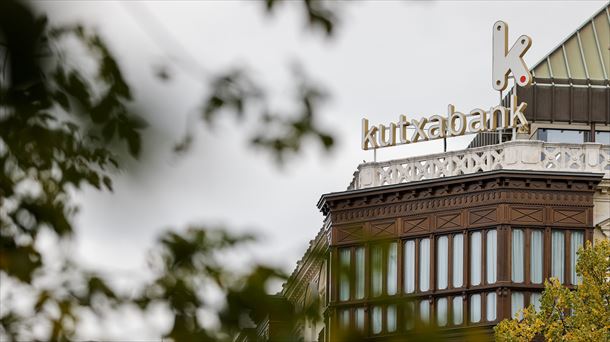Although many people associate txakoli with the coast, the wineries of Araba and the inland valleys of Bizkaia and Gipuzkoa are becoming increasingly relevant. This year, almost 4 billion liters were produced between the three appellations, 20% less than in 2023.
A. Aramendi Elduaien | EITB media
By definition, txakoli is the wine made in the Cantabrian slope from Euskal Herria, mainly with grapes of this variety Hondarribi zuri and Hondarribi beltz. Many associate this wine with the coast, as most wineries are located in the coastal areas of Gipuzkoa and Bizkaia. However, also in the inner valleys txakoli is made. In some regions this is even the case This wine has been produced for centurieswhile in other cases they have decided to restore a lost activity.
Traditionally, today, January 17, the new harvest of the Getariako Txakolina designation of origin was presented in the municipality that bears this name. The 2024 harvest produced 2,521,300 liters of txakoli in this area in this appellation.
To this we must add the 1,218,117 liters of Bizkaiko Txakolina and the 253,000 liters of Txakoli de Álava, so in total they were produced almost 4 million liters with the last harvest.

However, producers are concerned because production has decreased in the past two years due to weather. The 2022 harvest was a spectacular harvest in the three areas, as the summer was dry and had mild temperatures. On the contrary, in 2023 it was reduced by about 20% overall 2024 has fallen again the same.
However, most of what is produced is consumed in the Basque Country exports are increasing. Getariako Txakolina exports 18% of its production, Bizkaiko Txakolina 5% and Txakoli de Álava 32%. The main countries that demand this wine are the United States, Great Britain, the Netherlands, Norway and Japan.
Until now, txakoli has been characterized as wine of the year. The best known is white wine, but some rosé and red are also produced. However, there are more and more wineries they decide to innovate and experiment with longer maturations or try making sparkling wines.
In terms of hectares, Getariako Txakolina is the largest denomination, followed by Bizkaiko Txakolina and Txakoli de Álava.

The designation of origin Txakoli from Álava is limited to Ayala Valley and the six wineries included are the municipalities of Aiara, Artziniega, Amurrio, Laudio and Okondo. In the designation of origin of Bizkaia 35 wineries across the country are included the entire territoryalthough the majority are in Uribe-Kosta, Urdaibai and Las Encartaciones.
For their part, 34 wineries produce wine under the Getariako Txakolina designation of origin, of which 20 are located in Getaria, Aia, Orio and Zarautz. This may be why many people associate this wine with the coast.
To 2007, the Gipuzkoa denomination It only accepted wines from wineries in Getaria, Aia and Zarautz. That year expanded its geographical reach to the entire territory historically and in many inland valleys they decided to restore an economic activity that existed but had been lost. This is how wineries emerged in, for example, Oñati, Arrasate, Olaberria or Villabona, some of them with great impact.
in the basement Murgialdai de OñatiFor example, a few years ago they discovered that their ancestors produced and sold wine in the 19th century. Owner Aritz Galdos, the process of restoring this activity was “very natural”: they started planting the first vines in 2008, then sold the grapes to other wineries to make their own wine and in 2020 built the winery in the same hamlet. . Currently they have 4 hectares of vineyards and with the last harvest they have produced approximately 23,000 liters.

Source: EITB
I’m Wayne Wickman, a professional journalist and author for Today Times Live. My specialty is covering global news and current events, offering readers a unique perspective on the world’s most pressing issues. I’m passionate about storytelling and helping people stay informed on the goings-on of our planet.



